| << . 1 . 2 . |
| Author |
Message |
Steve_S
Member
|
# Posted: 27 Apr 2016 08:35am
Reply
Hey Don... man you got a sweet setup there, me, has a touch of envy 
We were up at our local mill 2 day's ago discussing our siding (board on board with face board being live edge cut) see example below. We were looking at the various log piles as we are even picking the logs to cut from (now that IS cool) and he (the miller) was telling about the bugs this year and how a lot survived... there's more beetle kill than before & getting worse which is starting to worry him... This mill was started by his Great Grand Father in the 1800's so the history is there see as well.
We'll be taking the lumber straight from the saw to truck, so I'll be stacking it on the property till I put it up this fall. I am a tad worried over the critters taking up residence in the fresh wood, so if possible could you post pics of your trough ? Seems like the best option for us will be to go from truck to borate dip to stack. What would you suggest for the Borate Mix ?
This is how we intend to side our cabin:
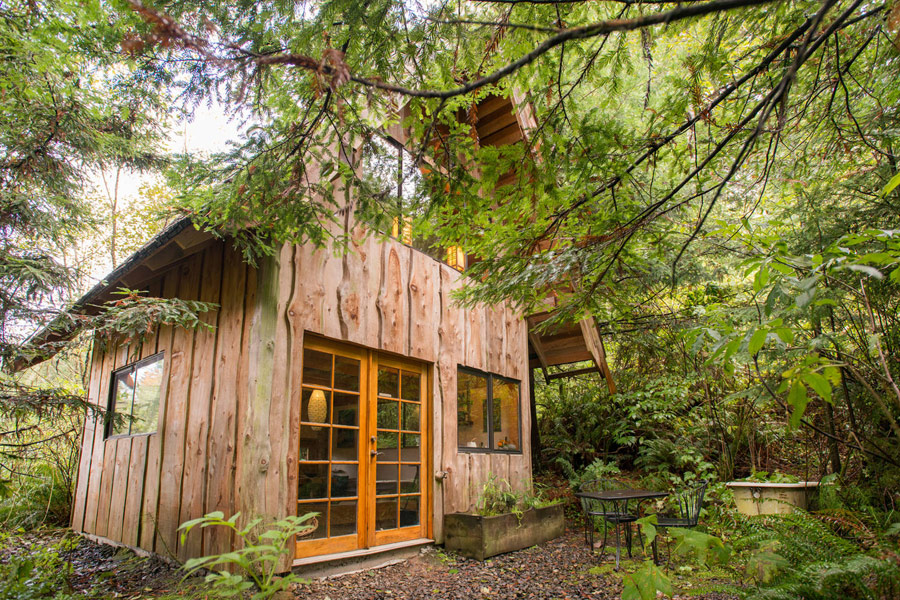 This is Western Red Cedar though, we will be using eastern white pine. This is Western Red Cedar though, we will be using eastern white pine.
|
|
Don_P
Member
|
# Posted: 27 Apr 2016 09:21pm
Reply
I'm back in for the night but the tank is nothing fancy. A couple of 16' 2x8's for sides and 2x8 ends, use subfloor glue liberally in all the joints. Then 2 rippings of ply 8' long for the bottom, I used glue and a bunch of staples but nails or screws would be fine. Then severa 1x4 cleats across the bottom and the ply joint. Caulk it and then paint it with whatever gloppy green leftover you have. I drilled a 1" dia hole in one corner of one end at the bottom and stuck a dowel in that. I drain into 5 gal pails through some old screen at the end of a dip session.
For the mix... what you are looking for is disodium octaborate tetrahydrate (DOT). Timbor is the listed powder for wood use, mix at 1lb of powder per gal of water. There are several chemically identical alternatives for the ag market. DOT in a wettable powder applied as a spray is how farmers boost boron in the soil, a micronutrient. Solubor is the most popular, Beau-ron is another that comes to mind. You want a wettable powder not pelletized borate, generally a real farm supply, 50 lb bags run ~$100. Mix it and it'll be white initially, it will go into solution and turn clear and you are good to go. This is a 10% solution which works well and is stable. Bump up to 15% and you will be very saturated... remember making rock candy, it'll start to crystallize especially at cooler temps. Never leave this stuff in a spray rig without cleaning up or it'll crysallize inside.
3 minute minimum dip... I've forgotten stuff for a week before, I guess that's petrified  . I slip a couple of sticks under the boards over the tank and let them drip for a few, you'll figure out how to slip in a few new ones and drain a few coming out. Then I go to a stickered stack. For best diffusion they want you to tight pile the stack and wrap it in plastic for a few days... I'm not getting that personal with the lumber. The diffusion works best if the wood is green. You have a concentrated "salt" on one side of the cell wall and the water on the other side is going to pull it through the wall to balance the concentration on both sides of the cell wall, so green is better, it'll go to the bone. . I slip a couple of sticks under the boards over the tank and let them drip for a few, you'll figure out how to slip in a few new ones and drain a few coming out. Then I go to a stickered stack. For best diffusion they want you to tight pile the stack and wrap it in plastic for a few days... I'm not getting that personal with the lumber. The diffusion works best if the wood is green. You have a concentrated "salt" on one side of the cell wall and the water on the other side is going to pull it through the wall to balance the concentration on both sides of the cell wall, so green is better, it'll go to the bone.
When the wood is dry the listed product is Bora-Care, DOT with ethylene glycol as a concentrate to be mixed with water. The role of the glycol is as a wetting agent, glycols dry slow so help keep that wet edge as the borate goes in. Yup, solubor and antifreeze is the same thing. I tune that to the sun and humidity ~ 1 qt/5 gal batch. I don't waste the money or play with the poison with green wood though. You can go non toxic, RV antifreeze does the same thing, propylene glycol.
Google the Vasa, a Viking ship being preserved in a bath of DOT and another glycol, PEG, polyethylene glycol. At high molecular weight it forms a waxy substance that fills the cell lumens and helps prevent shrinkage. If you've ever had a colonoscopy, you've chugged a jug of PEG.
Borated wood will not keep the carpenter bees away, they don't ingest the wood, they bite and spit, they are just nesting. Borates are not a contact poison they are interfering with the bugs ability to digest the wood so they have to ingest it.
that is cool looking siding. I'm not a real fan of live edge horizontal, the sapwood is on the lower drip edge. This avoids that and looks... natural.
|
|
Don_P
Member
|
# Posted: 25 Jun 2016 09:20pm
Reply
An old saying came up in the last day or two... wood takes a year per inch of thickness to dry. Wood doesn't know that  . Each species is different and then drying conditions outside of a kiln vary considerably. anyway, I took the meter around some of the stacks from that end of April white pine sawing. I didn't get everything out of the woods. The logs I left in the woods are pegging the meter. The 1" thick wood that is uncovered at the outfeed of the mill is running about 16%, the wood outside under tin is around 14% and the wood in the barn loft is around 12%... which is equilibrium moisture content for this area. It will drop below this a little due to the heat of the loft driving the emc down a bit. Remember that framing lumber is kiln dried to 19% and typical interior wood from the big box is kd15 so in about 60 days of early summer weather 1" pine is about there. That is about the fastest drying wood we have, another species would be further behind. I was getting ready to slide hammer the probe into some of the 2" and 6x6's when the buzzing caught my attention, a hornet nest built under one of the overhanging 6x6's in the pile. I should be able to get some readings tomorrow. As thickness increases drying slows much more than just doubling when the thickness doubles so it should be interesting to see where that wood is and what the moisture gradient is as the pins go in. . Each species is different and then drying conditions outside of a kiln vary considerably. anyway, I took the meter around some of the stacks from that end of April white pine sawing. I didn't get everything out of the woods. The logs I left in the woods are pegging the meter. The 1" thick wood that is uncovered at the outfeed of the mill is running about 16%, the wood outside under tin is around 14% and the wood in the barn loft is around 12%... which is equilibrium moisture content for this area. It will drop below this a little due to the heat of the loft driving the emc down a bit. Remember that framing lumber is kiln dried to 19% and typical interior wood from the big box is kd15 so in about 60 days of early summer weather 1" pine is about there. That is about the fastest drying wood we have, another species would be further behind. I was getting ready to slide hammer the probe into some of the 2" and 6x6's when the buzzing caught my attention, a hornet nest built under one of the overhanging 6x6's in the pile. I should be able to get some readings tomorrow. As thickness increases drying slows much more than just doubling when the thickness doubles so it should be interesting to see where that wood is and what the moisture gradient is as the pins go in.
|
|
Don_P
Member
|
# Posted: 26 Jun 2016 04:31pm
Reply
These are some pics of metering from today.
first shot is the moisture meter, a pretty standard old school analog pin type.
The slide hammer and pins are a little unusual they built this for log and timber work. The pins are 3" long, the green coating on the sides of the pins is insulation, they read only at the tips... here's the fun part.
Pic2 The pins are just in, looks like 16% so the shell is drying fast
Pic3 a bit deeper 28% which is right about fiber saturation point for white pine, so, if we were to cut the timber right there right now you should see the damp at that depth and from about there out to the edge you will not see the moisture. This would be the line in the wood between bound water that is attached chemically to the fibers and the free water from about 28% on up that is contained within the cell cavity and is readily visible. This is also the point where shrinkage begins, when the free water is gone, that is when the fibers begin to move closer together as the moisture that is bound to the fibers leaves.
pic4 is a bit deeper still, it's in the 30's and remained there till the probes were buried.
Gradient, we have a shell that is well below fiber saturation point so it is shrinking quite a bit. The core is still above FSP so has not yet begun to shrink... at a certain point the sweater is going to shrink until it pops its buttons over the fat core. Notice the check in the timber... whenshrinkage exceeds wood strength perpendicular to grain a check or checks form. White pine usually forms one major check with maybe another one or few small ones. Red pine for instance tends to form many smaller checks. In a kiln I would control temp and humidity to keep the gradient closer and the tendency to checking would be reduced (there are physical reasons... botanical reasons? at play as well)
Shrinkage and checking and settlement in a log wall... the wood that forms a timber can shrink and if it does not check then all that shrinkage results in dimensional change. If a check forms the wood has also shrunk, but the dimension may not have changed. Shrinkage and settlement are not necessarily the same thing  More pics in a bit, in for a big ice tea. More pics in a bit, in for a big ice tea.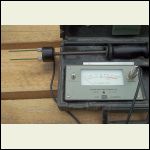
meter1.jpg
| 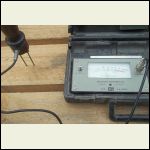
meter2.jpg
| 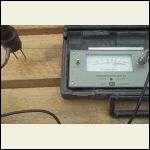
meter3.jpg
| 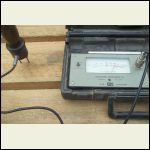
meter4.jpg
|
|
|
Don_P
Member
|
# Posted: 26 Jun 2016 10:32pm
Reply
First pic is one of the logs I left up on the hill, I dragged another half dozen down today. This was felled at the same time as the wood you've been seeing metered above, the log has simply laid in the woods, the meter pegged and I don't mean gently... remember moisture content is based on the oven dry weight of the wood, it is possible especially in pine to exceed 100%, it can be up to 300%, or 3 times the weight it would be if oven dry (water is heavy). Anyway, if left in the bark, wood is cooking inside a self basting compost bag. Bluestain, or sapstain is total now, the heartwood is nice and normal orange in color, the sapwood ring is totally blue.
Pic2 a locust board from that same round of sawing. It has been drying in the same conditions that produced 14% pine. Locust dries slower, its cell lumens are full of extractives, which helps keep shrinkage down and makes the wood rot resistant, but it slows down drying. When I can I try to meter in a representative area but preferably making that snakebite in scrap or a hidden face. In existing log or timberframe I'll sneak them in a check and drive over into solid wood.
pic 3 under that tin is a locust 6x8...this is a beam  It's about 28%, the white pine 6x6's right beside it are running in the 30's... but they will reach equilibrium moisture content well before the locust does. This is boxed heart and IIRC locust heartwood (the dead part of the tree) runs around 30% in the living tree, so this starts drier but dries slower. The good stuff is also low enough shrinkage to use green... the bad stuff curls around and parts your hair while you're sawing. It's about 28%, the white pine 6x6's right beside it are running in the 30's... but they will reach equilibrium moisture content well before the locust does. This is boxed heart and IIRC locust heartwood (the dead part of the tree) runs around 30% in the living tree, so this starts drier but dries slower. The good stuff is also low enough shrinkage to use green... the bad stuff curls around and parts your hair while you're sawing.
pic 4...well I just saw it while uploading and thought y'all would enjoy a pic of the highest valley in the state. Pretty obvious what created it from the air. Beautiful place.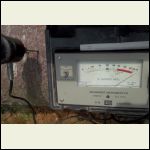
logopt.jpg
| 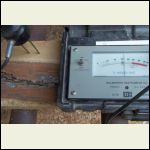
locustopt.jpg
| 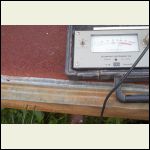
locust6x8.jpg
| 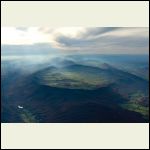
Burkes_Garden.png
|
|
|
bldginsp
Member
|
# Posted: 27 Jun 2016 12:04am
Reply
Burke's Garden is really beautiful- I read up on it a little- looks like a crater from a meteor or volcano but was formed by limestone cave collapse.
|
|
Don_P
Member
|
# Posted: 27 Jun 2016 06:28am
Reply
LOL, now I'm edumacated
|
|
bldginsp
Member
|
# Posted: 27 Jun 2016 08:58am - Edited by: bldginsp
Reply
I thought I was educated until I met someone who wasn't who knew more than me.
|
|
|
Don_P
Member
|
# Posted: 30 Jun 2016 06:28am
Reply
I checked the oak framing on the ~century old farmhouse I'm working on yesterday, 11-12% which corresponds to the published data for this area.
Off to put some hickory to its best and highest use 
"rode home on the scooter w/pig draped over back seat. throat cut and head danglin. gotta lotta looks."
|
|
MichaelMacias
Member
|
# Posted: 1 Jul 2016 07:15am
Reply
BrianCurry
|
|
neb
Member
|
# Posted: 1 Jul 2016 09:00am
Reply
Nice! Great looking wood.
|
|
Don_P
Member
|
# Posted: 1 Jul 2016 08:42pm
Reply
It is nice stuff, I've been using the oddball pieces at work this week for blocking, catwalk decking in the attic, etc. The trailer load is over where we had the pig picking and ham meeting yesterday. Still kind of living large today  We'll sort out 50 or so 1x12's for his siding for now and move the rest over to a friend's who is building a pottery kiln shed. From there hopefully I'll get an empty trailer back and can move some oak, poplar and cherry to the job next week. It'll be nice to get some elbow room for a bit, there are a number of trees here that need to go through the saw sooner than later. The pines have really grown up over the past 30 years and its time. Kind of thinking about making some small timberframe utility buildings, we're up to 256 sf allowable now, and set one up at the building supply. We'll sort out 50 or so 1x12's for his siding for now and move the rest over to a friend's who is building a pottery kiln shed. From there hopefully I'll get an empty trailer back and can move some oak, poplar and cherry to the job next week. It'll be nice to get some elbow room for a bit, there are a number of trees here that need to go through the saw sooner than later. The pines have really grown up over the past 30 years and its time. Kind of thinking about making some small timberframe utility buildings, we're up to 256 sf allowable now, and set one up at the building supply.
|
|
| << . 1 . 2 . |

